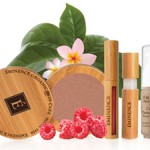Green cosmetics
Social awareness regarding the environment and sustainability is growing daily. Green cosmetics are increasingly present in the marketplace, bearing different labels that certify their purity. Natural, organic and similar such products are all the rage. However, we do not know what these concepts mean exactly. Do green cosmetics care better for our skin? Do they offer more guarantees than conventional cosmetics?
The cosmetics industry has been using thousands of synthetic substances for decades, some of which have been the subject of debate. Parabens, for example, are controversial given their potential carcinogenicity, although there is no scientific evidence that confirms this. But these debates undoubtedly raise interest in natural products, whose consumption is consequently increasing in many countries.
In Germany it is estimated that green cosmetics will this year represent 10% of the total market. This growth has led to the emergence of many natural and organic ingredients for use in the new products. But the lack of a homogeneous certification and clear international legislation may have a bearing on the quality and safety of the final product.
Green cosmetics are made with plant extracts and other natural ingredients and typically contain a minimum of synthetic products. They may include a range of certified natural, organic ingredients. But official international agencies have not as yet defined what exactly is meant by “organic”, “natural”, “biological” or “ecological”.
The scope of green cosmetics, furthermore, needs to go beyond composition based on natural products to try and avoid ingredients that lead to the extinction of species and avoid pollution with their packaging.
Green certificates
The European Commission established the Ecolabel in 1992. Today there are over 17,000 European products that use and meet its requirements, among them 407 soaps, shampoos and hair conditioners; there is no Ecolabel for other types of cosmetics. The only thing this label certifies, however, is that the product attempts to limit the use of hazardous substances, contaminates little by its content or its packaging and performs well. The fact remains that there is as yet no European legislation that specifically governs so-called green cosmetics, indicating what ingredients they can contain and in what quantities.
In the absence of specific legislation, European manufacturers of cosmetic products self-regulate through associations that certify the quality of the green cosmetics produced by their members. A Cosmetics Organic Standard (COSMOS) exists since 2010, which brings together the five most important bodies in Europe:
– BDIH (Germany)
– Cosmebio (France)
– Ecocert Greenlife (France)
– ICEA (Italy)
– Soil Association (UK)
COSMOS distinguishes between natural and organic cosmetics. It defends sustainable production and consumption and its standard and guidelines cover raw materials production to final product distribution.
Standards for most of the certification associations allow certain chemical compounds to be used, in the absence of natural products with the same characteristics, as the formulation of cosmetics would be difficult without them. But all agree in trying to avoid petroleum by-products, synthetic dyes and fragrances, and silicones. They also prohibit genetically modified and irradiated ingredients and those which have been tested on animals.
In the market, however, there are several certification labels and this can mislead consumers when choosing a green cosmetic, even though there may only be minor differences between the evaluation criteria of the various associations.
In the USA there are no specific regulations governing green cosmetics either, so manufacturers try to adapt to those prescribed for food products. The recently founded Natural Products Association (NPA), which represents 850 manufacturers of cosmetics, has published its own criteria and awards its own certificates.
Does “natural” mean safe?
The public, in general, tends to think that natural is synonymous with healthy. But there are no clear data to support this claim. For example, the natural extracts of some plants contain substances which can cause dermatitis, allergies, irritation or skin sensitization.
To avoid skin complications dermatologists advise caution in the use of products labelled as natural or organic. Many of their ingredients tend to be less studied and tested than pharmaceutical chemicals, which are subject to regulations and control.
Therefore, since the legislation is still not clearly defined, when we buy any type of green cosmetic we need to examine its main ingredients, see which label it bears and who certifies the brand and the product. To protect the health of our skin is best to avoid products whose origin is such that we have no guarantees.
If you want more information on this topic, the third international Sustainable Cosmetics Summit is being held during the month of May in New York. This initiative aims to promote green cosmetics and their values: sustainability, natural, organic and ecological products and fair trade.
Source: Food & Chemical Toxicology
